Buy or gift a stand-alone digital subscription and get unlimited access to dozens of back issues for just £18.99 / $18.99 a year.
Please register at www.exacteditions.com/digital/cornucopia with your subscriber account number or contact subscriptions@cornucopia.net
Buy a digital subscription Go to the Digital EditionThe European merchants of nineteenth-century Izmir built their gardens in Bornova, below the hills where they loved to shoot and fish. Rosemary Baldwin revisits the home of the Girauds and discovers a haunting reminder of a genteel era. Photographs by Bünyad Dinç
The village of Bornova has been home to English, French, Dutch and Italian merchants since the 18th century. Today, Bornova is a suburb of modern Izmir, Turkey’s bustling Aegean port. But enter it from the roundabout at the top of the new motorway, heading out of Izmir for Istanbul and the Dardanelles, and you will find yourself in a cluster of narrow lanes shaded by great plane trees. Here houses still shelter behind high ochre walls, protected by tall cypresses and spreading chestnut trees from the glare of Izmir’s concrete jungle.
One of these old houses belongs to Gwyneth Giraud whose late husband, Godfrey, first showed me his romantic garden in the early 1960s. Their son Brian is now doing Trojan work trying to restore a garden which was once tended by eight gardeners.
The Girauds of Izmir are direct descendents of Jean-Baptiste Giraud, who established himself as a trader in the great Aegean port in 1767. Although by no means the largest of Bornova’s houses, some of which are now being rescued and lovingly restored by a new generation of caring Turkish owners, theirs is the most evocative of old Bornova.
Jean-Baptiste Giraud was born in 1742 in the south of France, son of a wealthy landowner and mayor of Antibes. His first cousin was the Princesse d’Essling and the family insignia shows a dove perched on an olive tree; a prophetic coat-of-arms for a man who was to found his fortune in a country where olive trees spread in great silver waves along its Aegean and Mediterranean coasts. He also based his affairs in a city where doves are still heard cooing from morning to night.
Earlier Europeans were lured to Smyrna, as Izmir was then known, in the 16th and 17th centuries, by the trade in spices and silks. These were brought to the Aegean port on camels along the ancient roads that crossed Turkey, Perisa and India to China. The caravans would halt at caravanserais and wells that were shaded by huge Oriental plane trees, still found along many of Turkey’s old roads. Some still give shade to the busy, dusty streets of modern Bornova.
But it was a later generation of entrepreneurs who made their home here. They traded mainly in Turkish produce – dried figs and raisins, grain, nuts, liquorice, pepper, aniseed, and eventually minerals and carpets – and they imported manufactured goods from Europe.
Bournabat, as it was locally called, was near the hillls where these intrepid merchants love to shoot and fish for trout. Here they were well away from the unsalubrious summer heat of a city whose reputation was hardly more enviable than Naples.
The house where Gwyneth Giraud lives today was bought by her husband’s grandfather Edward Whittall in the second half of the 19th century. The Whittalls, a shipping family from Liverpool, were the next Europeans to settle in 18th-century Izmir…
A million windows gaze on to the fast moving waters of the Bosphorus. The beautiful and strategic straits divide a city and link two continents. But down by the water’s edge they are a world apart, a watery playground for seadogs, fishermen and commuters. By Rose Baring. Photographs by Francesco Venturi
One thousand tons of loose glass cling suspended in the world’s largest unsupported brick dome, an architectural miracle and the last great monument of Roman architecture. By Anthony Bryer
When the goddess Hera married Zeus, she received a golden apple from the Earth Mother, Gaea. It was a symbol of love, fertility and beauty and was grown in a heavenly garden in the west, guarded by three sisters, the Hesperides.
More cookery features
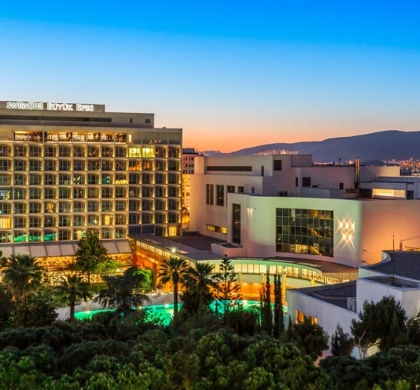
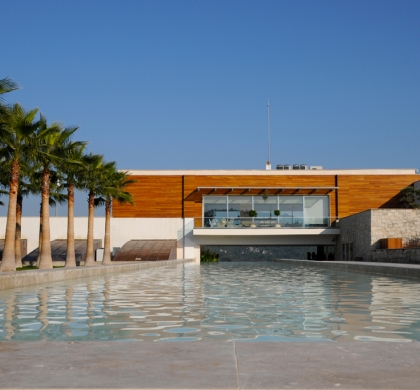
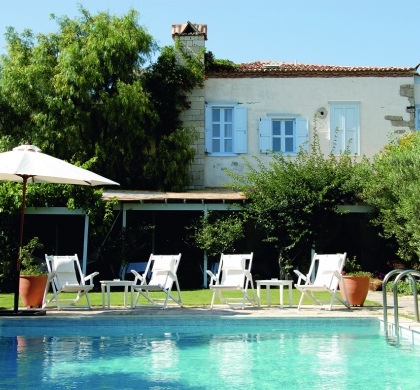
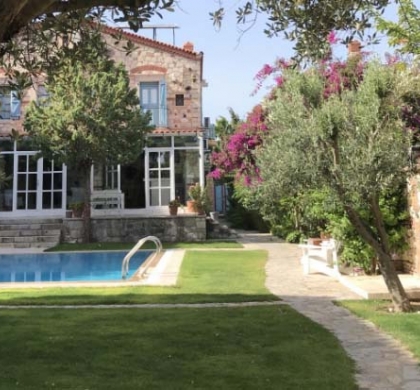
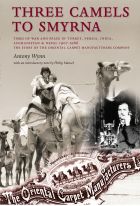

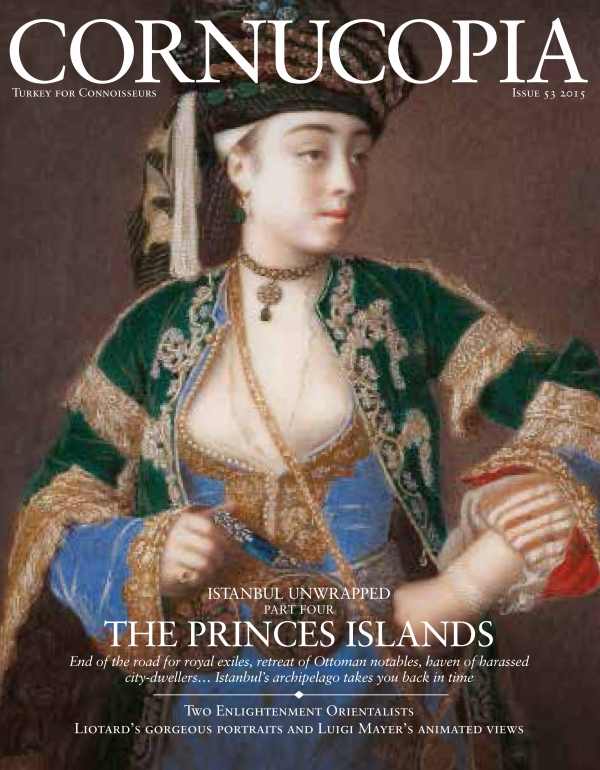
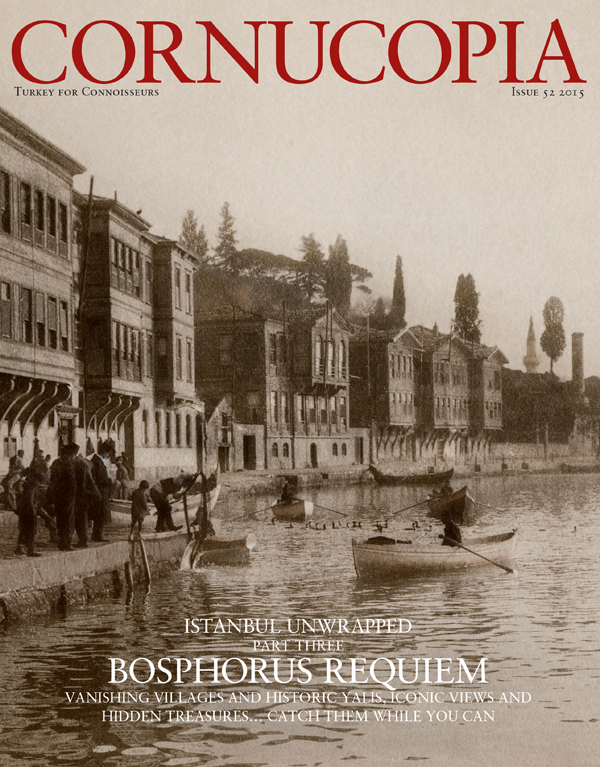
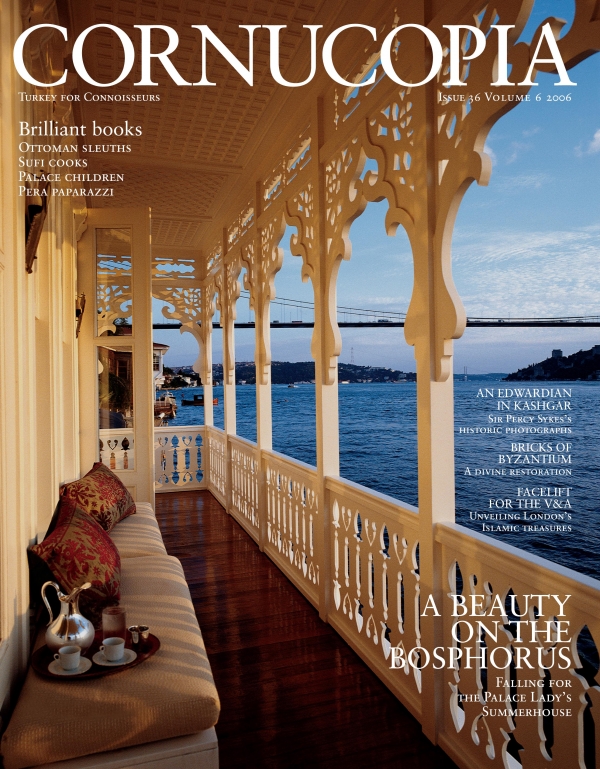
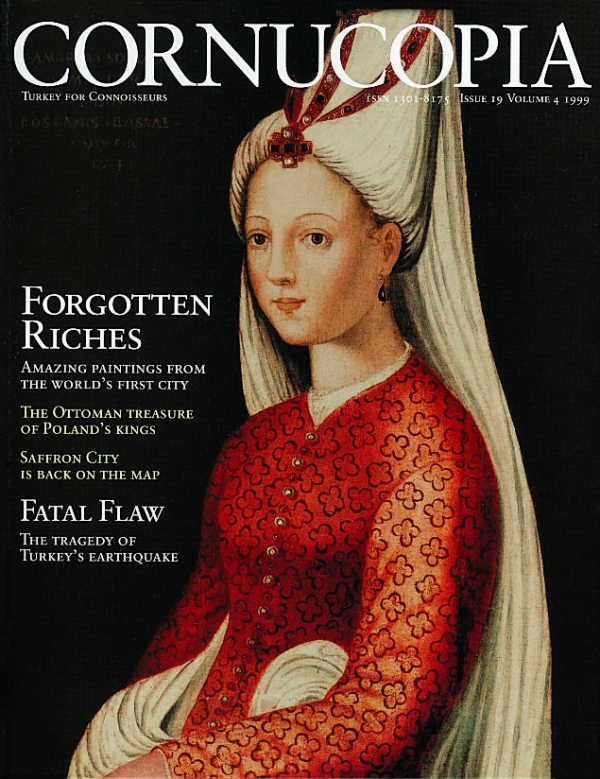

Cornucopia works in partnership with the digital publishing platform Exact Editions to offer individual and institutional subscribers unlimited access to a searchable archive of fascinating back issues and every newly published issue. The digital edition of Cornucopia is available cross-platform on web, iOS and Android and offers a comprehensive search function, allowing the title’s cultural content to be delved into at the touch of a button.
Digital Subscription: £18.99 / $18.99 (1 year)
Subscribe now